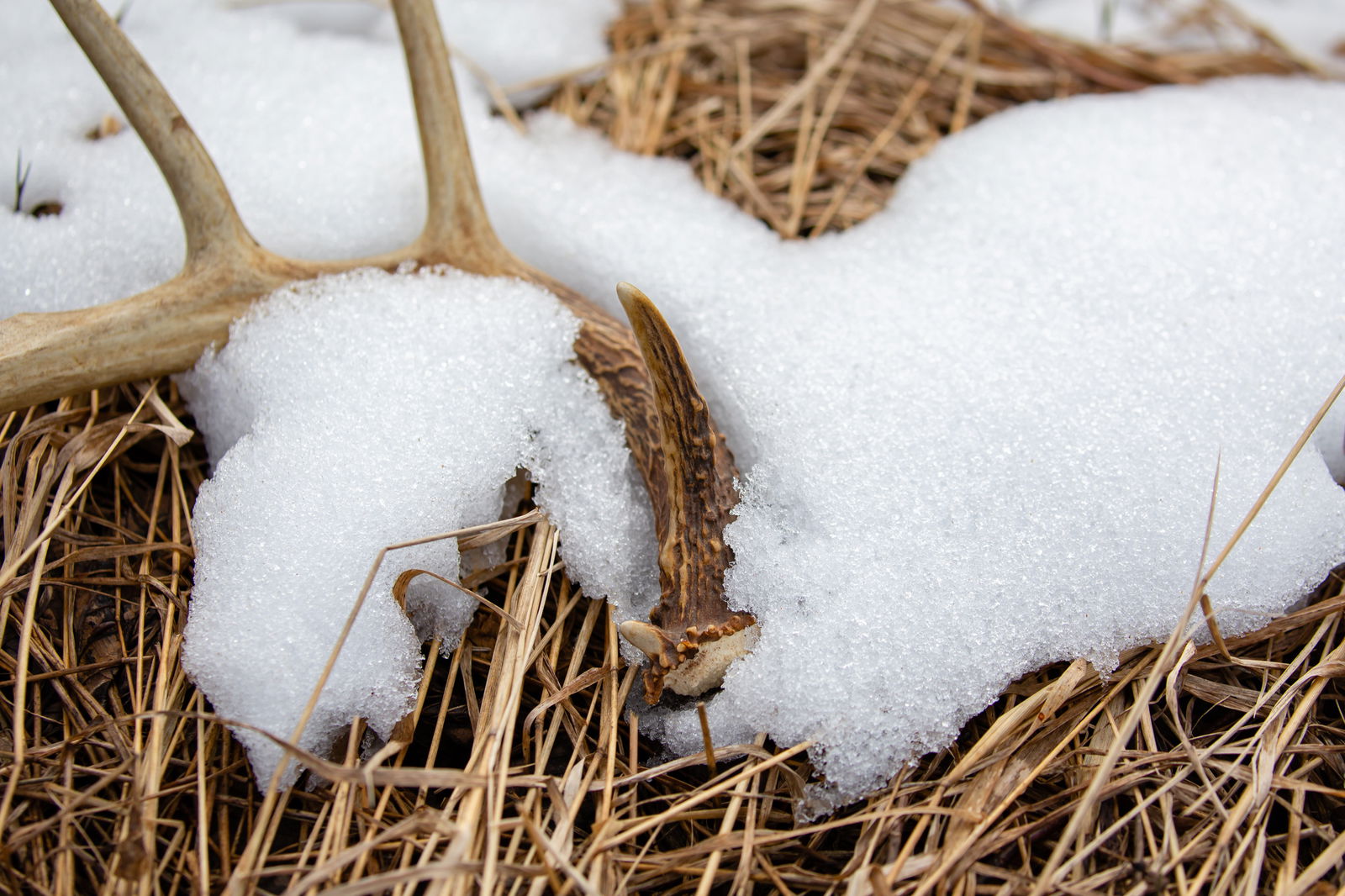Time coming to find antler sheds

By My Courier-Tribune
Winter hikers have stumbled across a shed antler by chance. But finding fallen antlers is also a purposeful passion for many people who enjoy white-tailed deer and their biological relationships with the land and seasons, according to the Missouri Department of Conservation.
“The mystery of it is the best part,” said Joshua Allen of Lee’s Summit. “You never know where they are going to lie. It’s a matter of getting out there and taking a lot of steps to find them.”
Elusive to eyes
Where deer live is where shed antlers are found. Shed antlers can seem elusive because just like morel mushrooms, their tan colors blend in with leaves, limbs and grasses on the ground. But just like morels, hunting shed antlers provides a good excuse for a walk in the woods and fields.
Following trails with deer tracks pressed into the soil or snow increases the chances of finding a shed, states a release. Deer often bed down during winter in tall native grasses or weed patches. Shed hunters should check the area near matted down deer beds thoroughly. Kevyn Wiskirchen, MDC scientist and deer biologist, likes to look where deer trails cross creeks and fence lines.
“When they jump to get across, that might cause enough jostle to get an antler to fall off,” he said. “If I find one antler, I’ll spend extra time searching the area. If one fell off, the other one will shortly. Sometimes when one antler falls off, the deer will feel unbalanced and may shake their head because they feel something wrong. It’s not uncommon to find the second antler next to the first shed.”
But like looking for morels, there’s no guarantee you will find antlers when walking in the woods. A buck might drop antlers days apart in separate locations. When antlers drop is driven primarily by day length, but can be affected by hormones and physical condition.
Annual antlers
Bucks start growing antlers in spring. During summer, the antlers are “in velvet,” covered by a thin, hairlike membrane while blood vessels feed nutrients and minerals to the core of the antlers. When antlers reach full size, bucks rub them on trees and shrubs to remove the velvet and polish them to shiny bone, states the release. When the mating season ends, the connection between the antler and the pedicle, the place where the antler attaches to the buck’s skull, weakens until the antler drops off.
Biologists believe that cervids, such as deer and elk, shed antlers annually to help both the individual and the species. Losing heavy antlers helps bucks conserve energy in the harsh winter months and when traveling through summer’s tangled growth. A buck can break an antler when fighting in autumn. Fresh growth annually renews his fighting tools. A young buck may grow small antlers, but he may grow a far larger rack as he gets older, given good nutrition. The deer herd is helped when the fittest males breed does, and large antlers are a sign of fitness.
Timing the search
Freshly shed antlers can be found from December to May. However, most antlers are shed from late January into March. Some shed hunters have preferred hunting times.
“Shed antler hunting makes a good family outdoor trek. The more eyes looking, the better the chance of seeing and finding,” states the release. “Shed hunters say overcast days are better than bright sunny days because with sun the shadows can conceal antlers.”
Many uses
People who collect antlers sometimes mount a matched pair as a wall hanger. Some add them to craft decorations such as wreaths, or they use them for rustic furnishings such as lamp bases.
Many shed hunters just like to create a pile to look at and enjoy. Antlers also make good chew toys for dogs.
FAQs on shed antlers
Permits are not required to find or possess shed antlers. However, sometimes buck deer die with antlers attached.
“Anyone finding a skull with antlers attached must contact their local conservation agent and obtain a possession permit if they wish to keep it,” states the release.
Always seek permission to hunt for antlers on private property. Do not trespass.
“Make sure gathering antlers is permitted on public lands that you visit. Some public lands prohibit their removal or require special permits,” states the release.
Shed antler hunting is allowed in MDC conservation areas. Many areas also have service roads and trails for hiking.



